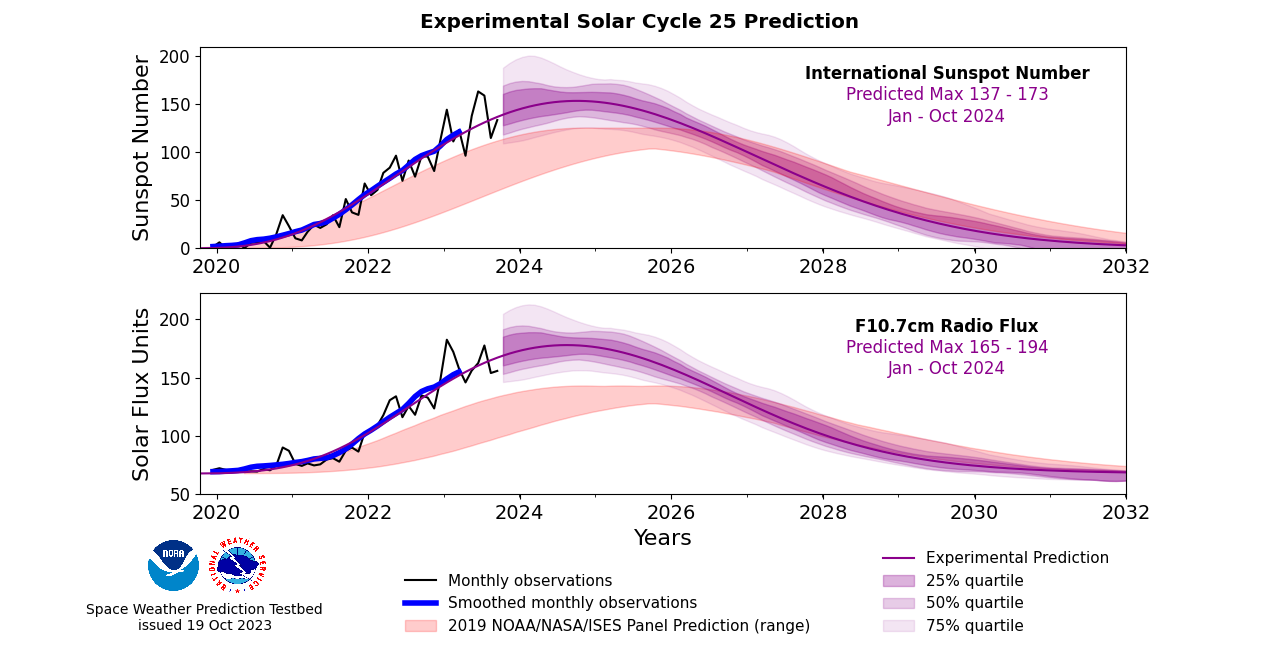More and More of Our Critical Communication Infrastructure is Moving into Space

The era of private enterprise communication satellites began in August of 1962, with the launch of Telstar I, a joint project of AT&T, Bell Labs, NASA, the UK Post Office, the BBC, and the predecessor of French Télécom (today known as Orange).

Compared to today’s satellite communication system, Telstar I was fairly primitive. It could transmit multiplexed telephone calls, data between IBM 1401 mainframe computers, or a single television channel across the Atlantic. To capture the relatively weak signal, six ground antennas were built on an enormous scale; the ground station in Maine stood as tall as a 14-story building.
In the early 1970s, the startup Digital Communications Corporation (known today as Hughes Network Systems) created the Very Small Aperture Terminal (VSAT) dish antennas, which, at just 2.5 meters in diameter, were a miniaturization breakthrough for their time, allowing two-way communication with satellites overhead.
Today, the adoption of satellite communication is, pardon the phrase, skyrocketing. SpaceX has launched a “constellation” of small satellites under the Starlink brand. These have very small ground receivers, allowing them to connect Internet data to rural homes and businesses as well as (more recently) to transport in motion, such as RVs or ships. In the next year or two, many wireless telephone operators around the world are planning to add Starlink-based cellular services to their offerings, including texting, voice, and data, making it possible to get cell connectivity in remote regions.
Not wanting to be left behind, Amazon launched its first two “Project Kuiper” satellites this past month (October 2023). Amazon says it plans to eventually have a fleet of 3,236 Kuiper satellites overhead, allowing it to connect its AWS cloud services and broadband networks all across the world.
What Could Possibly Go Wrong?
The original Telstar I went dark (e.g. failed prematurely) in November 1962, just a few months after going into operation. The cause was determined to be radiation, which fried the transistors on board the spacecraft.
It’s thought that the recent US high-altitude atmospheric nuclear test (code name Starfish Prime), as well as a subsequent Soviet high-altitude test, had energized the Van Allen Belt, in effect, creating a man-made solar flare. While Telstar I was able to be restarted for a time, solar radiation once again overwhelmed its microcircuits, and it fell into a permanent sleep in early 1963.
When the Sun Boils Over – the Next Solar Maximum is Coming in 2024
In “normal times,” the improved shielding added to newer satellites helps prevent most degradation events, but sometimes the sun has other ideas.
While the sun may appear unchanged over time, it follows a predictable solar cycle that repeats about every 11 years, culminating in a stormy “solar maximum” marked by an increase in dark sun spots, the ejection of high-energy solar flares, and the polarity reversal of the sun’s magnetic field.

NASA recently sped up its forecast for the arrival of the next solar maximum (#25), which NASA now predicts will arrive between January and October of 2024 (a year earlier than previously expected).
Will 2024 Bring More Risk of Corona Mass Ejections (CMEs)?
Given that NASA now expects the Solar Maximum in 2024, there is also an increased chance that the sun will shed large-scale solar flares, known by the heliophysicists that study the sun as Corona Mass Ejections (CMEs).

If one of these Corona Mass Ejections targets the Earth’s magnetosphere, it can potentially create a strong electrical disturbance through induction (think wireless phone chargers that transfer power through the air).
The strongest of these so-called Geomagnetically Induced Currents (GICs) on record was the 1859 Carrington Event during Solar Cycle 10. This geomagnetic storm was so strong that the Northern Lights (aurora borealis) were visible as far south as the Caribbean, and telegraph operators reported getting induced electric power from their equipment, even when the telegraph lines were disconnected from batteries.
Other major events that are thought to have originated from CMEs reaching the Earth include:
- The three-day “New York Railroad Storm” in May 1921 (during Solar Cycle 15) created intense Geomagnetically Induced Currents (GICs) that would damage modern equipment.
- A series of solar storms in August 1972 (during Solar Cycle 20) created by CMEs disrupted satellite communication and brought power outages. It also caused naval mines used by the US Navy in Vietnam to detonate.
- An intense geomagnetic storm in March 1989 (during the very active Solar Cycle 22) caused a nine-hour power outage in Hydro-Quebec’s power distribution system. It also led to subsequent transformer damage at 12 U.S. nuclear plants.

Could a Direct Hit from a Large Corona Mass Ejection (CME) Damage Critical Infrastructure in Space?
Spacecraft and satellites are highly vulnerable to damage caused by CME events.
In February 2022, Starlink reported that as many as 40 of the 49 satellites it had just launched failed due to a geomagnetic storm, which caused them to fall out of orbit.
A bigger CME could be worse. Even turning the satellites away from the worst of the solar energy may not be enough to save them in this case.
We dodged such a bullet in 2012 by a scant nine days when a massive CME shot out of the sun (thought to be as big as the 1859 Carrington event) and just missed making a direct hit on the Earth’s magnetosphere.
If this were to happen today, satellite-based communication could be severely degraded or rendered unavailable. The effect could go far beyond the inconvenience of losing satellite internet or phone calls – in the modern world, we are very dependent on satellite communications such as GPS for landing planes safely, surveying topography for construction projects, or simply driving to a new destination.
Ironically, we might also lose access to our important “eyes in the sky” that help us predict space weather conditions, making us less prepared for the next event.
Can We Predict the Damage Inflicted on Ground-Based Infrastructure from a Direct Hit from a Major Solar Flare?
As with many complex questions, the answer is ‘it depends.’
For example, there will likely be significant damage to the power grid, but the question is, will it be knocked out for hours, days, months, or, in some cases, possibly years?
As was the case with the Carrington event in 1859, which saw telegraph operators “shocked” by telegraph wires that were not connected to batteries, today’s network of long transmission power lines could also be similarly affected by Geomagnetically Induced Currents (GICs) caused when the energy particles from the sun suddenly induce a strong current in the transmission lines that could overwhelm the equipment in the power grid.
(To learn more specific analysis and photographs of the potential damage to power generation and transmission systems, see this overview presentation by NOAA or this detailed report by John Kappenman of Metatech, prepared for the Oak Ridge National Laboratory, and a GAO Overview Report.)
Two government agencies, North American Electric Reliability Corporation (NERC) and the Federal Energy Regulatory Commission (FERC), are working to provide standards (such as NERC’s 693 Reliability Standard) and operating guidelines for power grid operators to help prevent damage to the grid during a geomagnetic storm.
However, the widespread use of highly vulnerable microelectronics in power control systems and switches adds an “unknown unknown” risk to today’s power grid that was not present back in the early days of the telegraph system.
As researcher Ian Cohen, a chief scientist who studies heliophysics at Johns Hopkins Applied Physics Laboratory, points out, we simply don’t know what will survive and what will fail during the next major solar storm event – and the resulting mixed failure modes could make diagnosing and repairing the grid difficult and slow.

Unshielded Microelectronics are Vulnerable to High Voltage Shocks, But is it Practical to Protect All Electronic Circuits?
The same type of technology that protects airplanes from lightning strikes could help protect sensitive electronic devices.
Here, we’re talking about Faraday cages and other shielding technologies that would allow solar energy to pass around a device rather than through it.
The technology isn’t new; Faraday built the first enclosed cage that later bore his name in 1836.
These cages are also not particularly complex to implement – but adding Faraday cages to all the microelectronic devices we use in the modern world isn’t a very practical solution.
The value that comes from using today’s electronic sensors and devices comes from their ability to easily interact with other devices – and locking them away inside protective Faraday cages kind of defeats the purpose.
For example, when you tap your phone at the register at Starbucks to pay for your coffee, the phone is “exposed” during the transaction. Of course, you could put your phone away in a Faraday cage-style bag to prevent communication when you’re not using it.
The prepper movement has latched onto the concept of Faraday cages in a big way. There are hundreds of “prepper porn” YouTube videos and Sub Reddit forum entries explaining how to, for example, dig a hole in the ground to hide your electronics inside an enclosed metal trash can to keep them safe during the next solar storm, or worse, an electromagnetic pulse (EMP) caused by detonating an atomic bomb high in the atmosphere.
Could such measures protect sensitive electronic equipment? Possibly. But it begs a couple of questions, such as “Is it practical to dig the phone out of the ground to make a phone call?” or if an electromagnetic storm (whether caused by either a CME or an EMP) destroys the entire wireless communication system, “Whom can you call using that iPhone that was saved underground?” In our opinion, an emergency ham radio might be more practical.
(One rumor going around is that Tesla plans to put its Dojo supercomputer deep underground, possibly in conjunction with one of its Boring Company deep tunnel projects. We don’t have enough information to comment on this rumor.)
Nevertheless, is some additional shielding against solar storms warranted?
Possibly, especially for expensive equipment.
Another useful investment could be automated “quick disconnects” that could sever equipment connections to the power grid, hopefully preventing damage caused by strong voltage spikes.
We also need better space weather forecasting tools. Researchers are applying AI tools to improve conventional weather forecasts, so it may be possible to do something similar to help provide faster, more accurate forecasts for dangerous incoming solar storms.
Our final observation is that it might be a good idea not to put all your eggs in one basket when it comes to relying on satellite-based communication infrastructure. Keeping some ground-based services online might come in useful.
Formaspace is Your Laboratory Research Partner
If you can imagine it, we can build it, at our Austin, Texas factory headquarters.
Talk to your Formaspace Sales Representative or Strategic Dealer Partner today to learn more about how we can work together to make your next construction project or remodel a success.









